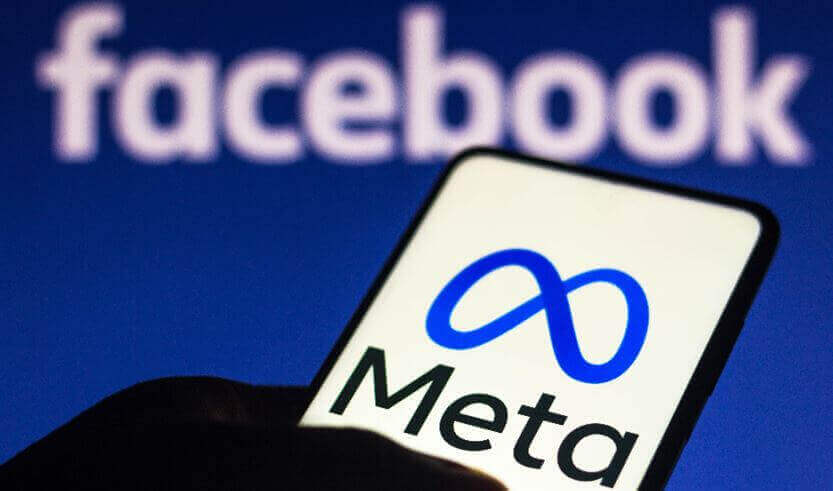4 Fundamental KPIs to Track For Your Next Digital Marketing Campaign
Source
https://digitalmarketinginstitute.com/blog/digital
10 January 2023
4 Fundamental KPIs to Track For Your Next Digital Marketing Campaign
The importance of using digital marketing KPIs (Key Performance Indicators) in measuring the effectiveness of your digital marketing strategy is probably something you already know.
But how do you know where to start or what to change if you need to try something new when there are so many options to choose from and so many businesses undergoing digital transformations?
Continue reading for a helpful breakdown of the most important KPIs for digital marketing, along with advice on how to select them for your initiatives, campaigns, and communications.
What is KPI?
A metric that you use as a starting point to measure performance is referred to as a KPI. They are typically numbers that can refer to any aspect of business, such as financial structures, productivity, or consumer behavior, and they can be used in digital or non-digital contexts.
It's best to start out by figuring out what the best KPIs are for measuring digital performance because the right KPIs for digital marketing will guide your future strategy. To select the indicators that will be most useful, you must first decide which aspect of your business or target goal needs to be prioritized.
You should first take some steps to select the appropriate KPIs, then carefully consider your goals and determine how to achieve them.
Keep it clear
Make sure that you choose objectives that are crystal clear–this is about metrics, data, and you’ll have to use objective not subjective numbers that you have now in order to set goals and forecast your future numbers.
Keep it simple
Anyone in your organization should be able to see and understand exactly what you’re doing with the metric. This isn’t complicated math – it’s basic business and analytics, so it should be easy to communicate what you’re doing with the rest of the team.
Keep it action-oriented
There are plenty of metrics floating around that you could focus on if you wanted – but the ones that matter the most are typically linked to a specific action, rather than just a value.
Keep it timely
Stick to a strict reporting and review schedule while establishing long-term, sustainable targets that align with your specific marketing goals.
The advantages of incorporating KPIs in digital marketing
KPIs are essential to the success of digital marketing because they provide measurable values that can be applied to key marketing goals.
For instance, you might decide to base your digital marketing KPIs on ROI, conversion rates, and customer lifetime value, among other factors.
By using KPIs to monitor your digital marketing campaigns, you'll give your data direction, making it easier for you to identify the metrics that will be most helpful to your efforts and omit those that are unnecessary.
What are the best KPIs to use for digital marketing?
Determine whether you have an analytics tool to manage the metrics or if you need to calculate them manually by starting with just a few key metrics that you are aware are reliable indicators of the health of your business, such as conversion rates or visitor rates.
Here are 4 main KPIs for digital marketing that you need to monitor to help you succeed analytically.
1. Search engine organic traffic
This KPI will accurately measure the proportion of website traffic that comes from organic search.
You may be able to link your search engine optimization (SEO) strategy to the organic traffic coming to your website. Your content is performing well if it has a healthy amount of organic traffic because it is valuable, relevant, and engaging.
These KPIs will enable you to make changes to produce more relevant, SEO-rich branded campaign content and will assist you in understanding where your organic traffic is coming from. Examples of these changes include:
• Number of lead conversions assisted by organic search
• Number of customer conversions assisted by organic search
• Percentage of traffic associated with branded keywords
• The proportion of traffic derived from non-branded keywords
2. Conversion rate for a website or landing page
Understanding how each of your landing pages is performing regarding conversions is essential, whether you have created a dedicated (and great) landing page for your campaign or direct prospects to specific pages on your website.
You can identify potential weaknesses or capitalize on strengths by comparing conversion rates across your site. Which will enable you to replicate this success elsewhere.
These metrics will also enable you to evaluate how user-friendly, and engaging your content is to your intended audience:
• Bounce rate
• Average session length
• Goal conversion rates: based on your goals and aims, this metric illustrates when a prospect has completed a niche campaign goal, such as subscribing to a mailing list or sharing a piece of content
3. Cost per click (CPC)
A useful digital marketing KPI is cost per click (CPC) because it provides a transparent pricing structure that will enable you to create the most cost-effective and successful campaigns possible.
With the aid of this KPI, you can see how much money you typically spend on pay-per-click (PPC), display ads, and retargeting.
The goal is to gradually increase your CPC, which will lead to more effective, efficient, and cost-effective campaign activities.
Here are two additional KPIs you should monitor in this area:
You should also track these KPIs: Customer lifetime value (CLTV); cost per acquisition (CPA)
4. Return on marketing investment (ROI)
To effectively use your budget for a particular campaign is determined by your digital marketing ROI. You can determine whether your investments are producing significant results by looking deeper into this metric.
In this scenario, the higher ROI, the better. Your campaign expenditures are successful if your ROI is strong. If your ROI turns out to be low, you'll be able to examine your weakest points and make necessary adjustments.
Avoiding vanity metrics
'Vanity metrics' is a term that is sometimes used to describe digital marketing KPIs that are meaningless or of little value. These are numbers that you might want to change, but they don't really provide you with a lot of information about the steps you can take to decide on actions that will help you achieve your business goals.
As a general rule, stick with metrics that are action-based and describe the customer experience. Starting out with some important corporate goals will help you choose them.
Take Google Analytics as an example. Some metrics, such as page views and impressions, might be viewed as vanity metrics. We all want "more" of them, but are they really providing you with enough knowledge to act? No, not always.
Contrarily, sales conversions give you a reason to take action; if they're low, we need to figure out why. Is our e-commerce site's checkout feature functional? Is the website down for any reason? Has the ranking of a product on Amazon changed? And so on.
Knowing what to avoid is one of the best ways to succeed with KPIs for digital marketing. Here are five vanity metrics that you should only use as a small amount of your marketing efforts.
What metrics should you focus on?
Let's look at the metrics that will help your next digital marketing campaign succeed now.
1. Brand
Brand campaigns are a long-term strategy to expand your audience and reaffirm the key message of your business and products. A company can build its brand reputation by using a campaign that uses consistent messaging on a regular basis. Coca-Cola is a prime illustration. The brand needs to come up with regular creative campaigns that reinforce the Coca-Cola brand and encourage you to choose it over competitors.
Coca-Cola would lose market share to rivals like Pepsi if it stopped investing in brand development. The types of metrics you should pay attention to when developing a brand digital campaign are:
• Reach: When engaging in brand activity, you should aim to reach as many people as you can. The total number of people who have seen your advertisement is referred to as reach.
• Impressions: The total number of impressions is the number of times your advertisement is displayed. Impressions are a very popular metric used to measure the effectiveness of display advertising. The campaign's reach increases as the number of impressions increases.
• CPM: The term "cost per mille" (CPM) in marketing refers to the cost of 1,000 ad impressions on one webpage. If a website publisher charges $3 CPM, an advertiser will be required to pay $3 for each 1,000 impressions of their advertisement.
• Views: It's obvious that views are more directly connected to video-based interaction. With YouTube Pre-Roll, you can place your advertisement on specific videos and only be charged if the viewer watches for more than five seconds. Views in this case refer to everyone who has watched your pre-roll advertisement for more than five seconds.
2. Direct Response
The primary goal of direct response campaigns, which include calls-to-action, is to evoke immediate customer action. Direct response marketing campaigns aim to bring in immediate revenue.
Direct response campaigns can be measured, so you can see which advertisements are being reacted to as well as how many sales each advertisement has generated. Ads that are not generating a ROI are then dropped or changed.
The online travel agency Booking.com is a good illustration of a direct response advertiser. Booking.com is more focused on getting you the best deals than it is on establishing its brand. Some of the metrics you should be aiming for when it comes to direct response campaigns are:
• Clicks: You must attract visitors to your website. It's okay to acquire impressions for brand activity, but for direct response, you need to convert those into clicks.
• Click-through rate (CTR): This metric represents the ratio of clicks to impressions. Ads must be tailored to specific demographics in order to achieve a high CTR, and the creative for the ads must reflect this.
• Sales: You want users to visit your website, click something, and then buy something. Online reservations for a restaurant or confirmations of test drives for a particular car brand are examples of other online actions that can be considered "hard leads" and may be significant to advertisers.
• Conversion rate: You want to make sales from the traffic you send to your website. The best metric for assessing this is conversion rate. You can achieve incredibly high conversion rates by eliminating irrelevant traffic and making sure that only users who are likely to convert click on your ads and visit your site.
Related Articles

18 November 2022
New tools have just been released by Meta to assist creators in expanding their communities, finding new audiences, and making money from their content.

10 September 2024
Lebanese designers Elie Saab and Rami Kadi are embracing the metaverse, redefining fashion shows through immersive digital experiences. By blending haute couture with Web3.0 technology, they create interactive, globally accessible events that push the boundaries of fashion and innovation.